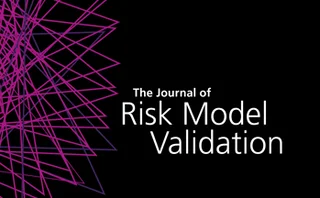Journals
Identification of interbank loans and interest rates from interbank payments: a reliability assessment
The authors investigate the reliability of the “Furfine filter” often used to identify interbank loans and interest rates from interbank payments settled at central banks.
Central counterparty auction design
The authors analyze the role of auctions in managing the default of a central counterparty’s clearing member.
Art-secured lending: a risk analysis framework
In this study, the authors identify the three types of risks involved in an art-secured lending operation and present a framework to assess their combined effects via a Monte Carlo simulation.
Volatility spillover along the supply chains: a network analysis on economic links
The analysis in this paper reveals that additional fundamental risk gets transferred along supply chains, and that suppliers are exposed to additional fundamental risk that is not captured by their market beta. Suppliers are therefore exposed to…
Integrating macroeconomic variables into behavioral models for interest rate risk measurement in the banking book
This paper proposed a nonparametric approach to decompose a macroeconomic variable into an interest-rate-correlated component and a macro-specific component.
Range-based volatility forecasting: a multiplicative component conditional autoregressive range model
This paper proposes a multiplicative component CARR (MCCARR) model to capture the "long-memory" effect in volatility.
Old-fashioned parametric models are still the best: a comparison of value-at-risk approaches in several volatility states
The authors present backtesting results for 1% and 2.5% VaR of six indexes from emerging and developed countries using several of the best-known VaR models, including generalized autoregressive conditional heteroscedasticity (GARCH), extreme value theory…
An alternative statistical framework for credit default prediction
This study compares the gradient-boosting model with four other well-known classifiers, namely, a classification and regression tree (CART), logistic regression (LR), multivariate adaptive regression splines (MARS) and a random forest (RF).
Risk-neutral densities: advanced methods of estimating nonnormal options underlying asset prices and returns
This work expands the analysis in Cooper (1999) and Santos and Guerra (2014), and the performance of the nonstructural models in estimating the "true" RNDs was measured through a process that generates "true" RNDs that are closer to reality, due to the…
An empirical evaluation of large dynamic covariance models in portfolio value-at-risk estimation
This research develops a framework adopting conditional covariance modeling combined with various de-noising methods to estimate the portfolio VaR and proves the importance of DCC over the sample rolling method widely used in the industry.
Procyclicality mitigation for initial margin models with asymmetric volatility
In this paper, we explore the procyclicality of initial margin requirements based on VaR volatility models.We suggest procyclicality can be reduced using a three-regime model rather than using ad hoc tools.
A new dynamic hedging model with futures
This paper proposes a new econometric model for the estimation of optimal hedge ratios (HRs): the Kalman filter error-correction model (KF–ECM).
A regime-switching factor model for mean–variance optimization
In this paper the authors formulate a novel Markov regime-switching factor model to describe the cyclical nature of asset returns in modern financial markets.
The impact of shareholders’ limited liability on risk- and value-based management
In this paper, we analyze the consequences of shareholders’ limited liability for the risk- and value-based investment decisions made by a nonlife insurer under solvency constraints.
Numerical simulation and applications of the convection–diffusion–reaction
This paper develops two local mesh-free methods for designing stencil weights and spatial discretization, respectively, for parabolic partial differential equations (PDEs) of convection–diffusion–reaction type.
Monte Carlo pathwise sensitivities for barrier options
In this work, we present a new Monte Carlo algorithm that is able to calculate the pathwise sensitivities for discontinuous payoff functions.
Option pricing in exponential Lévy models with transaction costs
We present an approach for pricing European call options in the presence of proportional transaction costs, when the stock price follows a general exponential Lévy process.
An adaptive Monte Carlo approach
This paper proposes a new, flexible framework using Monte Carlo methods to price Parisian options not only with constant boundaries but also with general curved boundaries.
Estimating the contagion effect through the portfolio channel using a network approach
This work studies contagion risk through the portfolio investment channel using network analysis and simulation on bilateral cross-country data.
Current expected credit loss procyclicality: it depends on the model
This work looks at a wide range of models to test the degree to which CECL is procyclical for different types of model.
A sensitivity analysis of the alpha factor
In this paper, we investigate the alpha factor’s sensitivity to key model parameters under stylized portfolio assumptions in order to better understand its complex characteristics. Our analysis is based on the numerical simulation of alpha sensitivities…
Introducing stylized facts on electricity futures through a market impact model
This paper provides an alternative way to introduce the stylized facts on electricity futures.
International Financial Reporting Standard 9 expected credit loss estimation: advanced models for estimating portfolio loss and weighting scenario losses
In this paper, the authors propose a model to estimate the expected portfolio losses brought about by recession risk and a quantitative approach to determine the scenario weights. The model and approach are validated by an empirical example, where they…
Incremental value-at-risk
This paper proposes a novel method for estimating future operational risk capital: incremental value-at-risk (IVaR)








